Abstract
OBJECTIVE. This article examines the distribution of heavy drug users across health and social service agencies in a community, and ways in which organizational and social policy factors influence pathways to services. DATA SOURCES/STUDY SETTING. Data are from the Community Epidemiology Laboratory, a project that includes comparable surveys of a wide variety of client, service provider, and general population groups in a single northern California county. STUDY DESIGN. The design is a cross-sectional analysis of patterns of service use and referral by heavy drug users distributed across a variety of service settings and in the general population. DATA COLLECTION. In-person, structured interviews by trained interviewers were conducted using comparable instruments, measures, sampling strategies, and fieldwork procedures. PRINCIPAL FINDINGS. The specialty drug treatment system serves only a small proportion of heavy drug users in the community. Large proportions of drug users are found in criminal justice, primary health, and welfare agencies. Patterns of service encounter and referral suggest that drug treatment clients typically have been in jail or on welfare prior to attending treatment, and are far less likely to have been referred to or from treatment by health providers. CONCLUSIONS. Health services research on drug abuse should expand its frame of reference to include services outside the specialty treatment sector. Drug treatment facilities are somewhat remote from other agencies in community service networks and are organizationally dependent on criminal justice and welfare systems. Further research should investigate both the costs and benefits of screening and providing services at earlier points of institutional involvement with drug abusers and the implications of interorganizational dependencies among criminal justice, welfare, and drug agencies for providers and clients.
Full text
PDF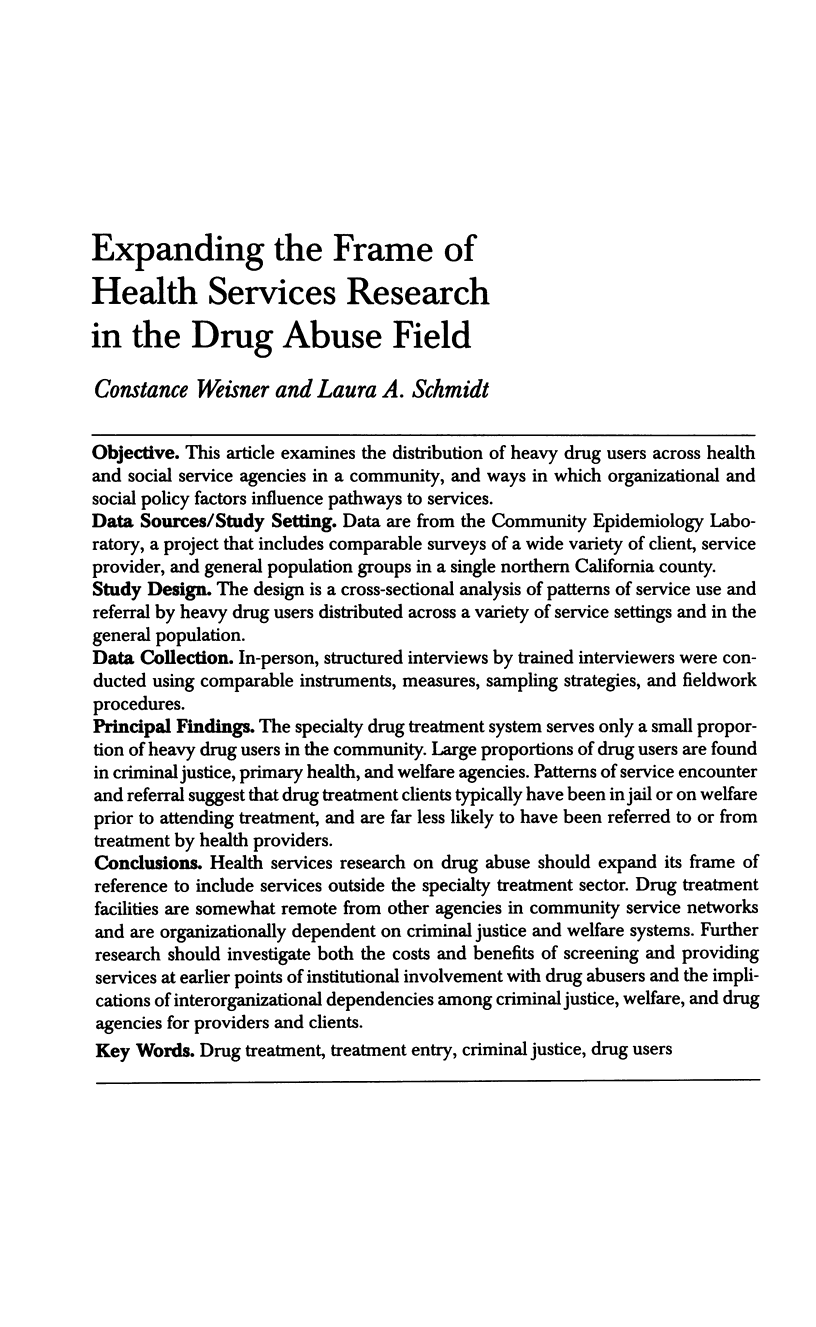
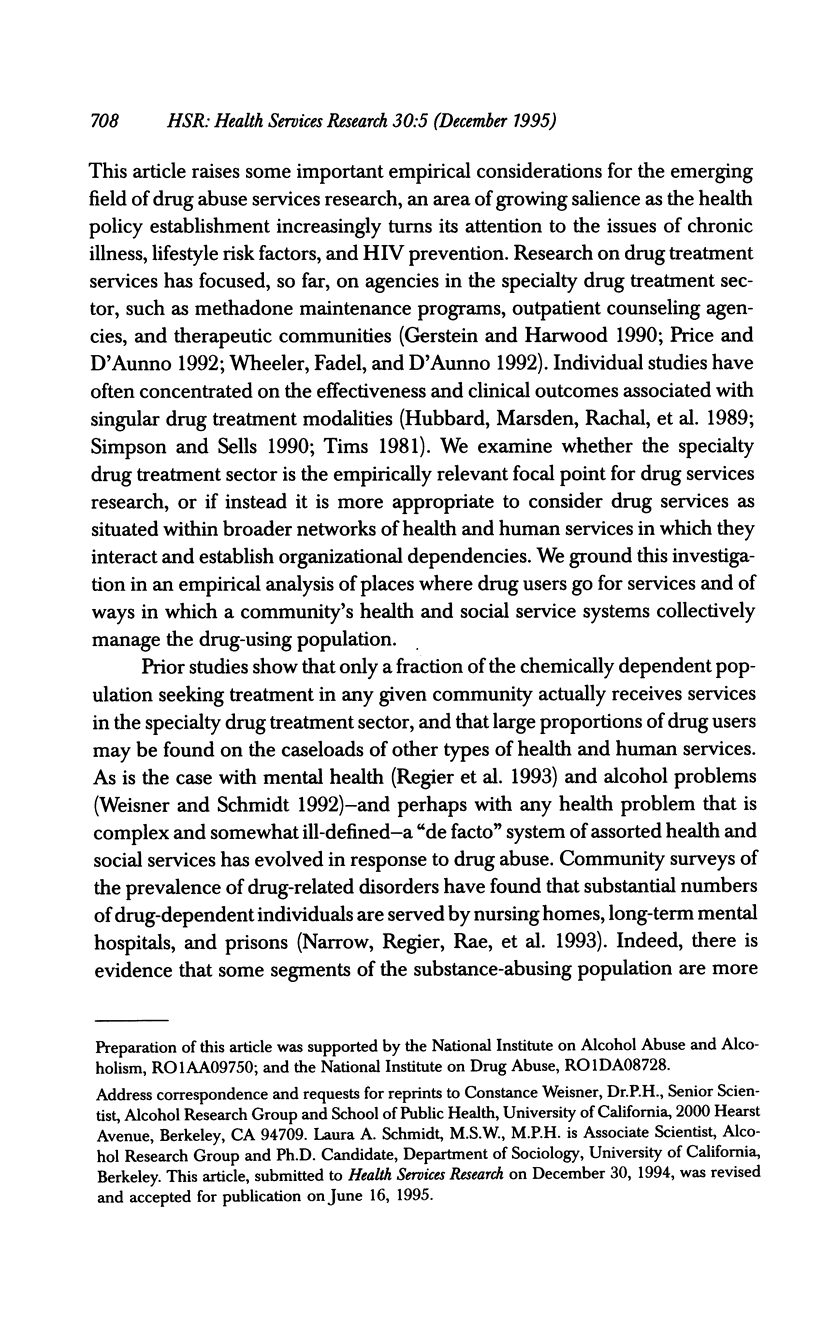
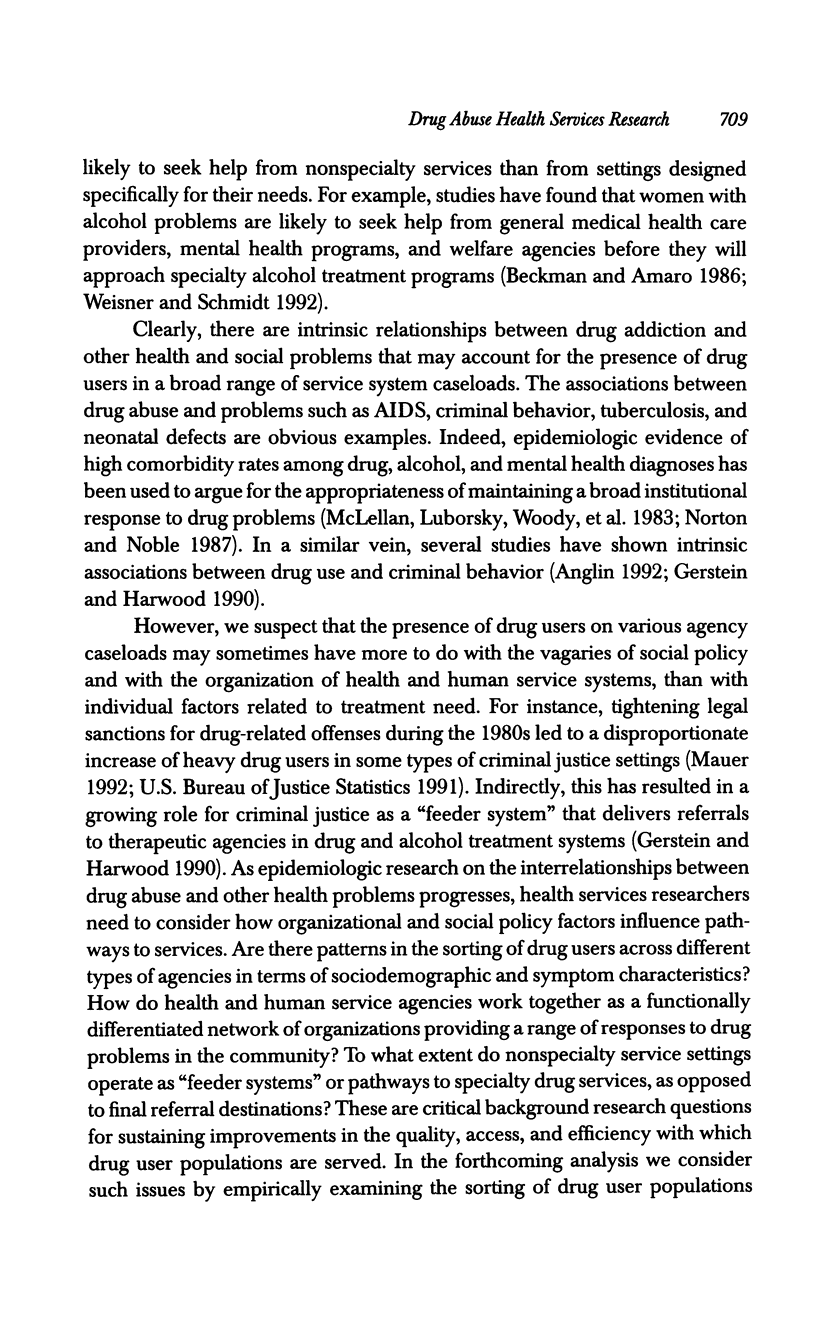
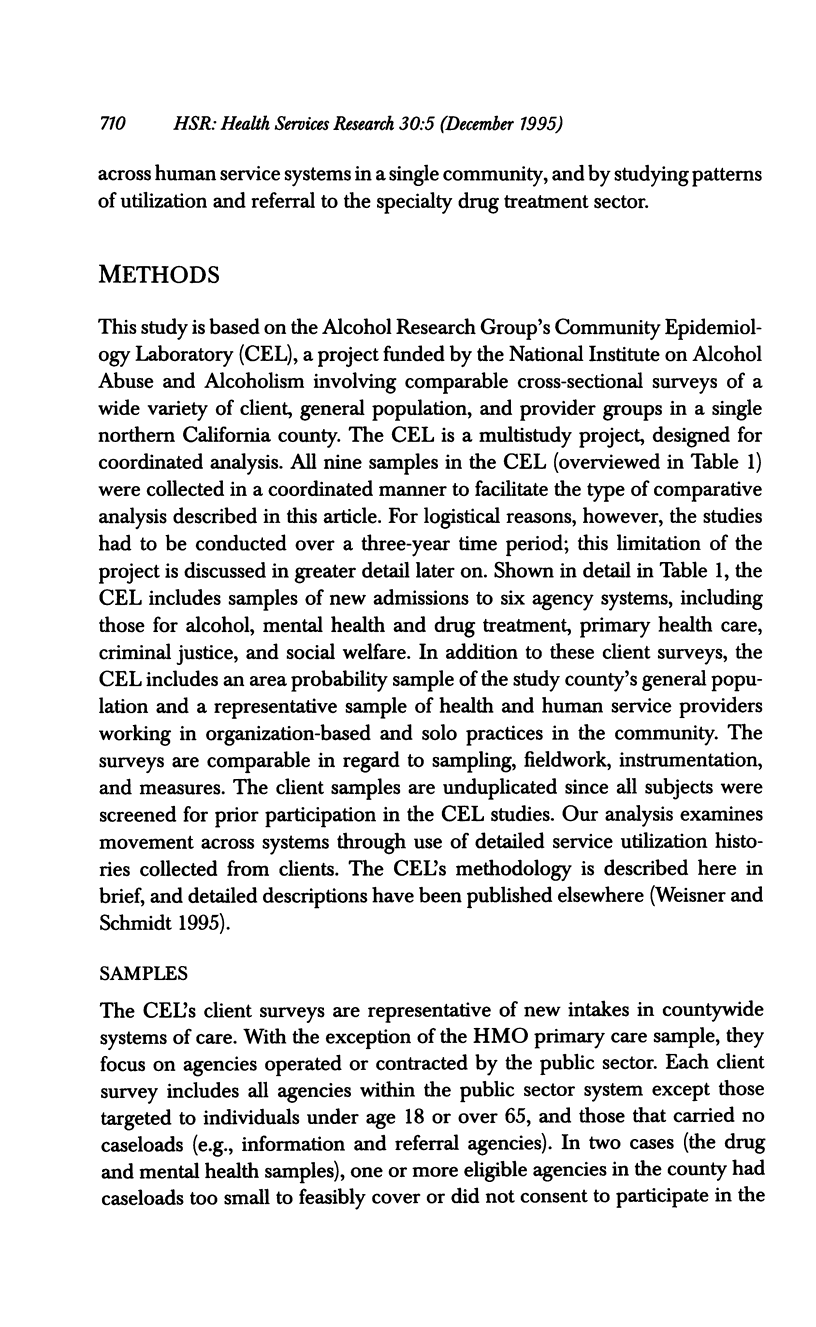
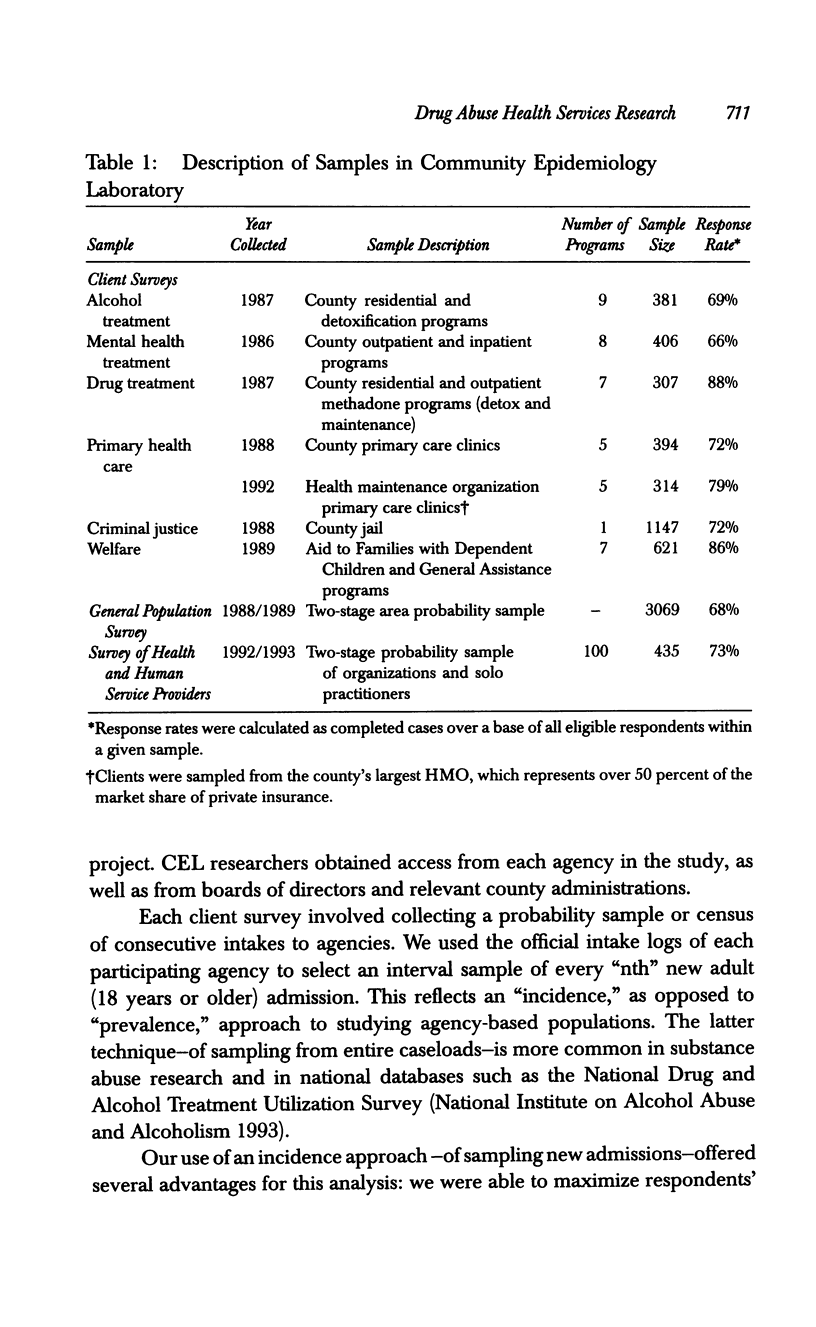
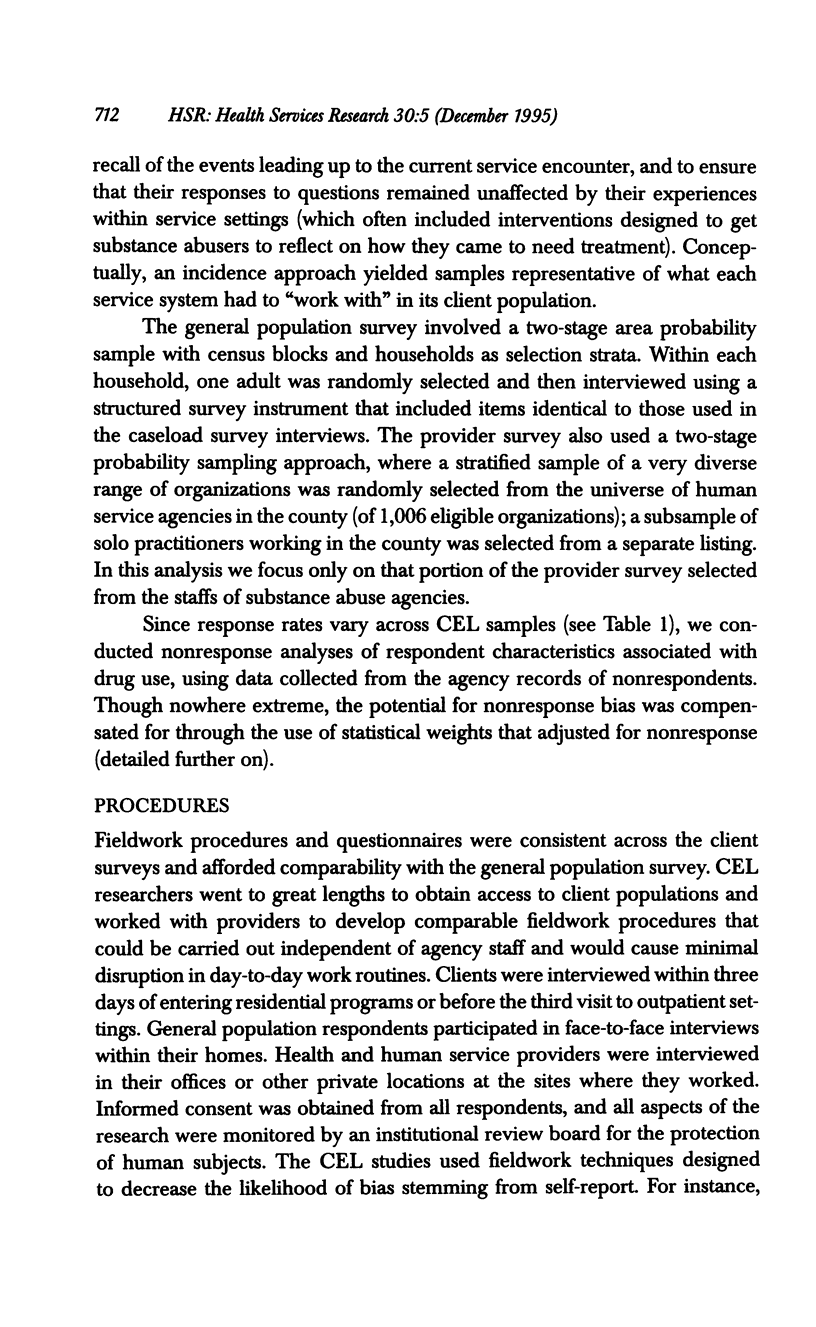
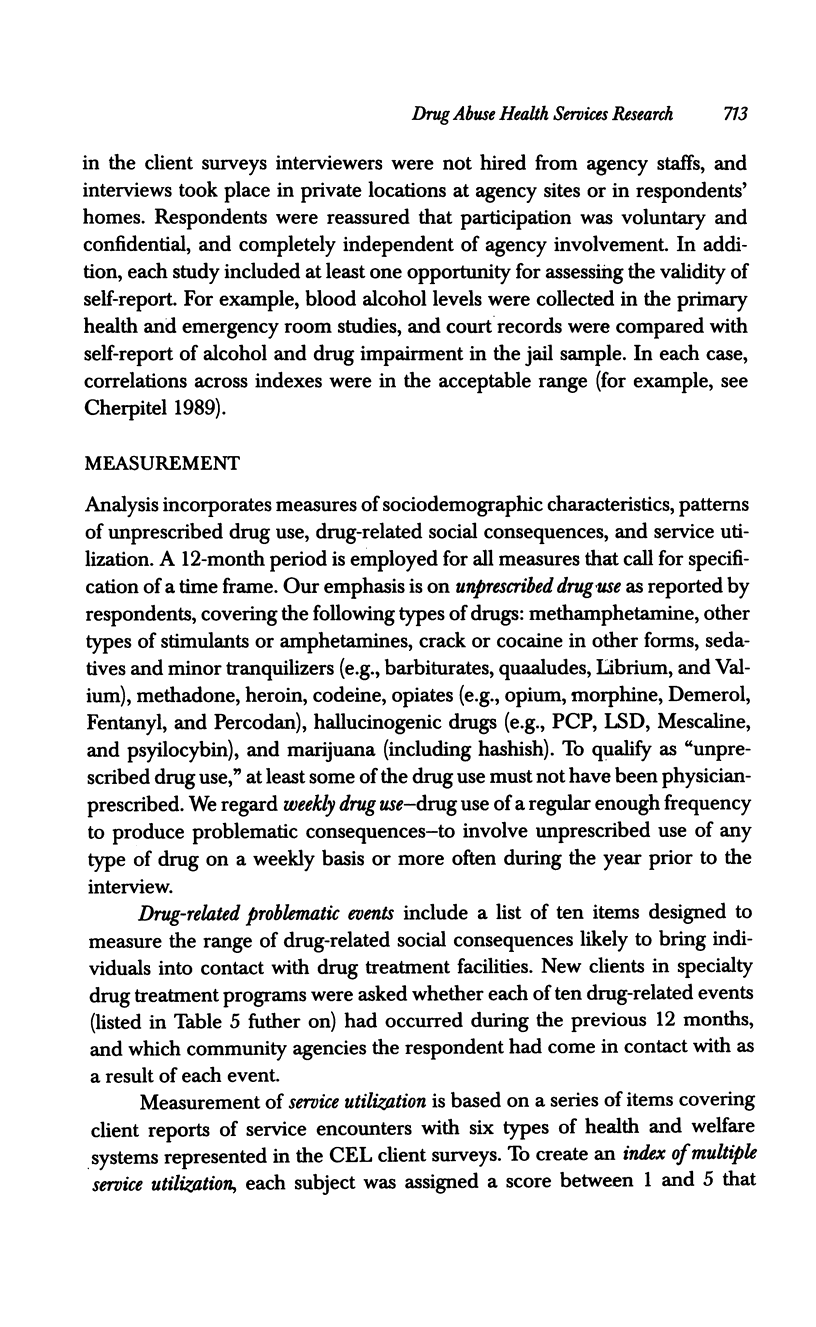
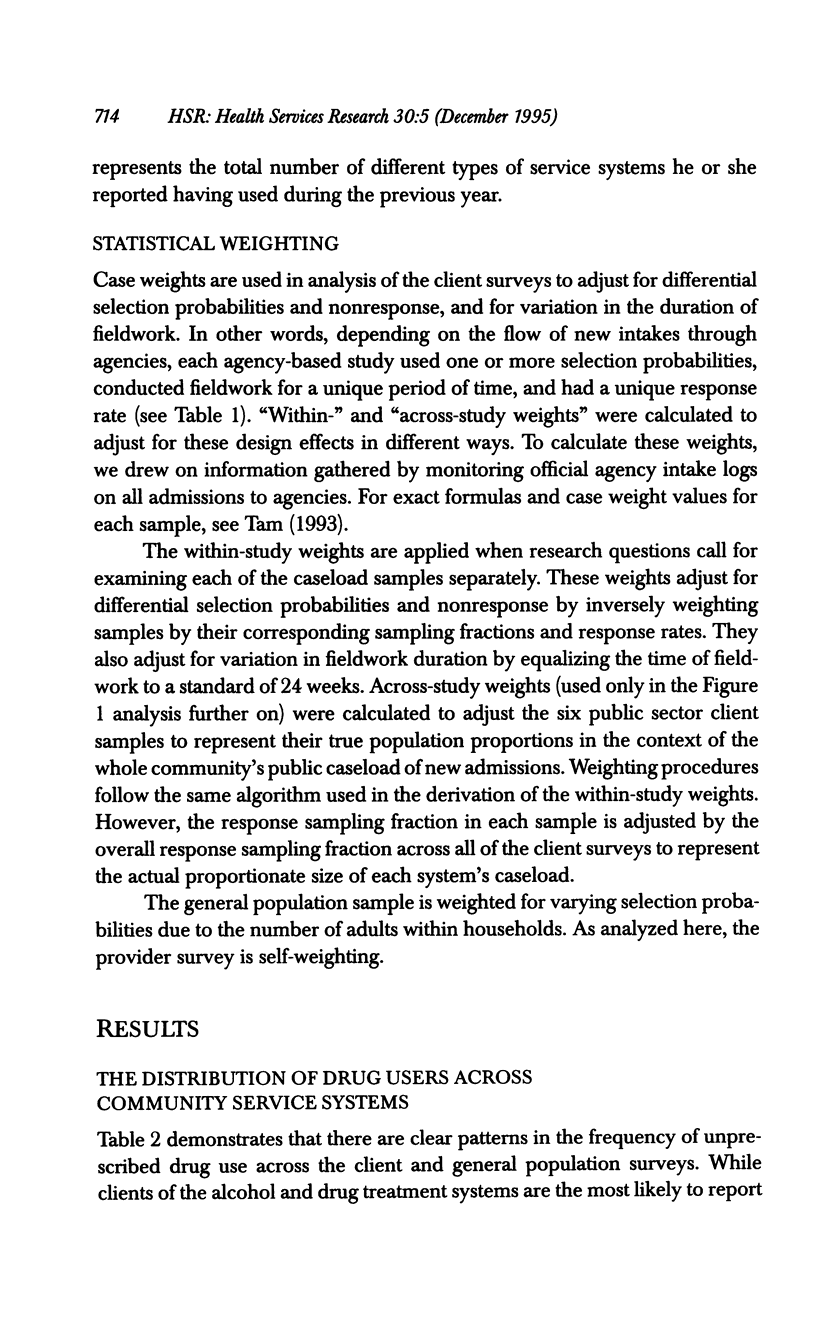
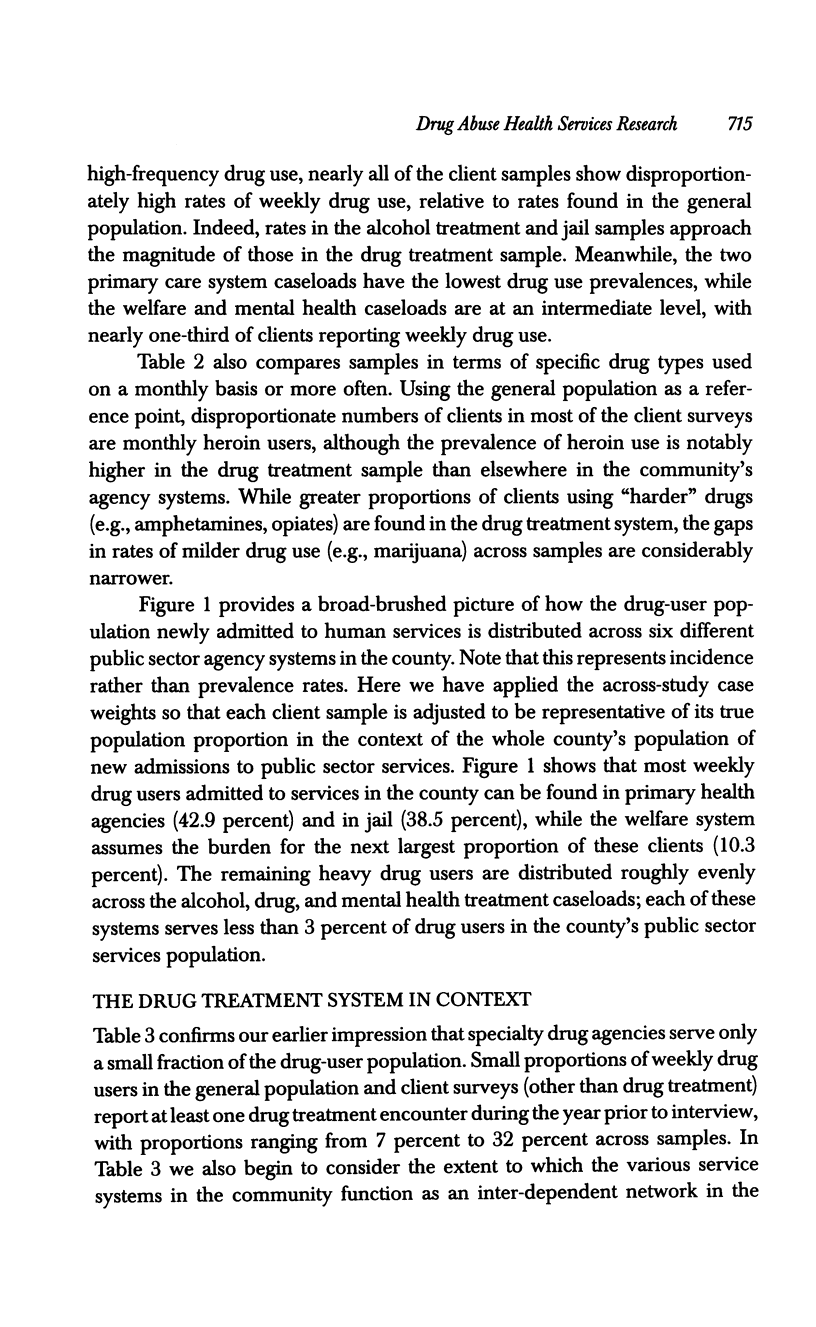
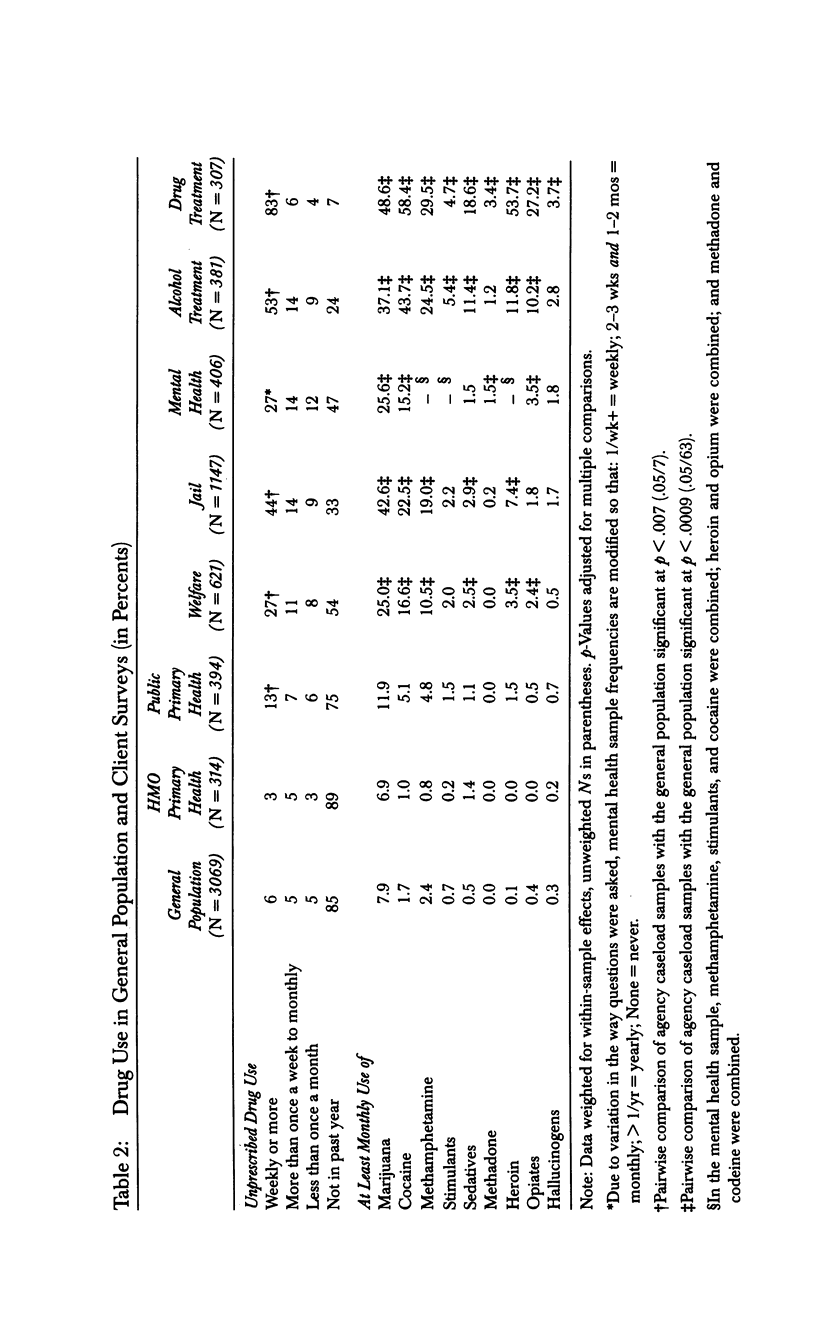
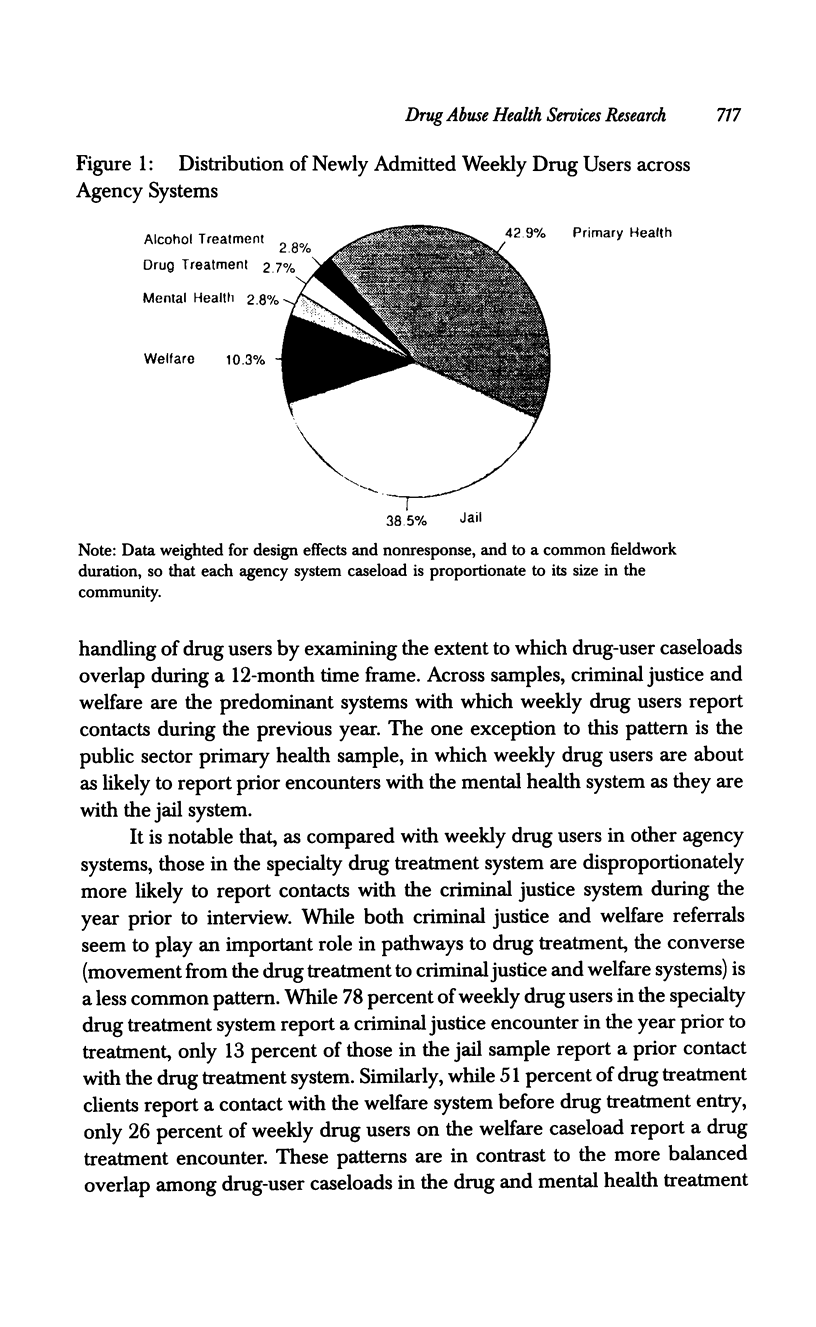
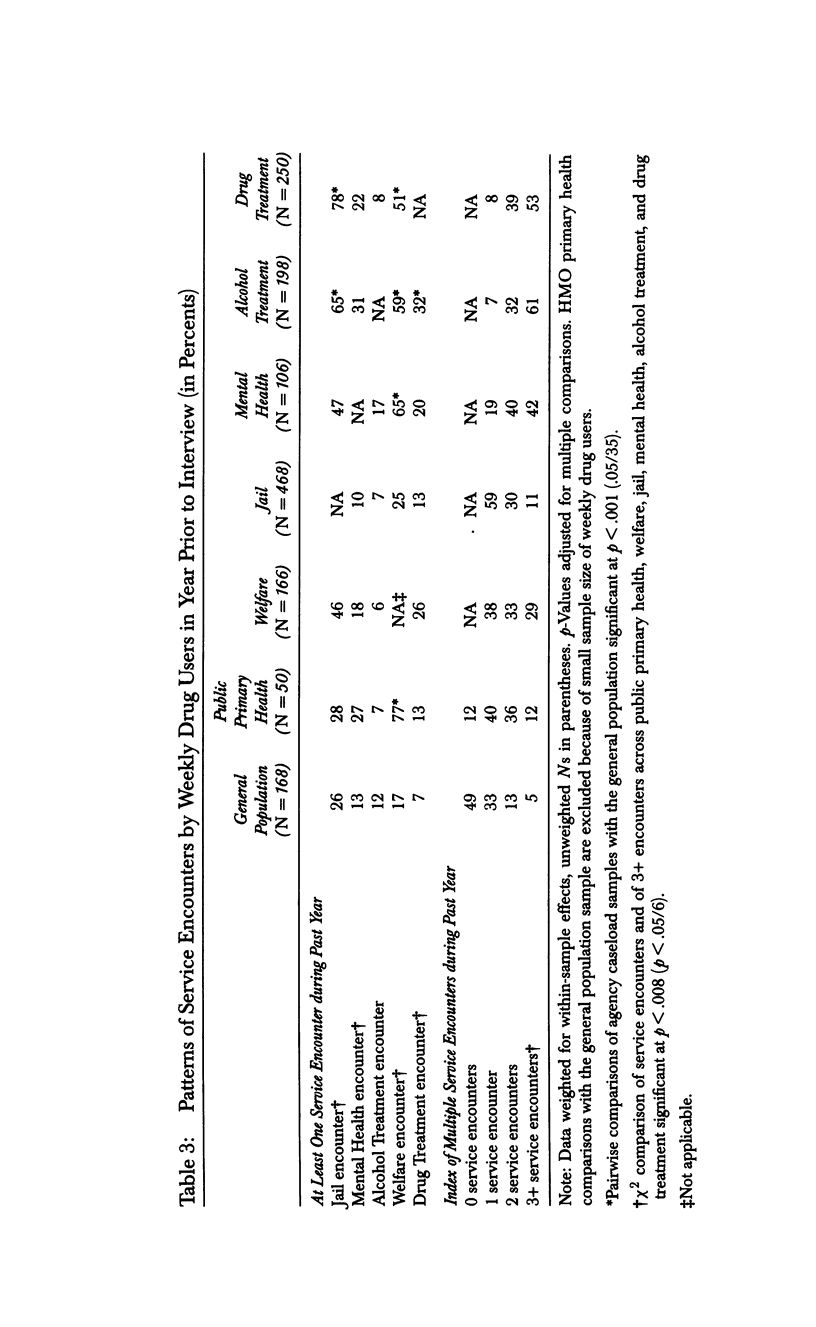
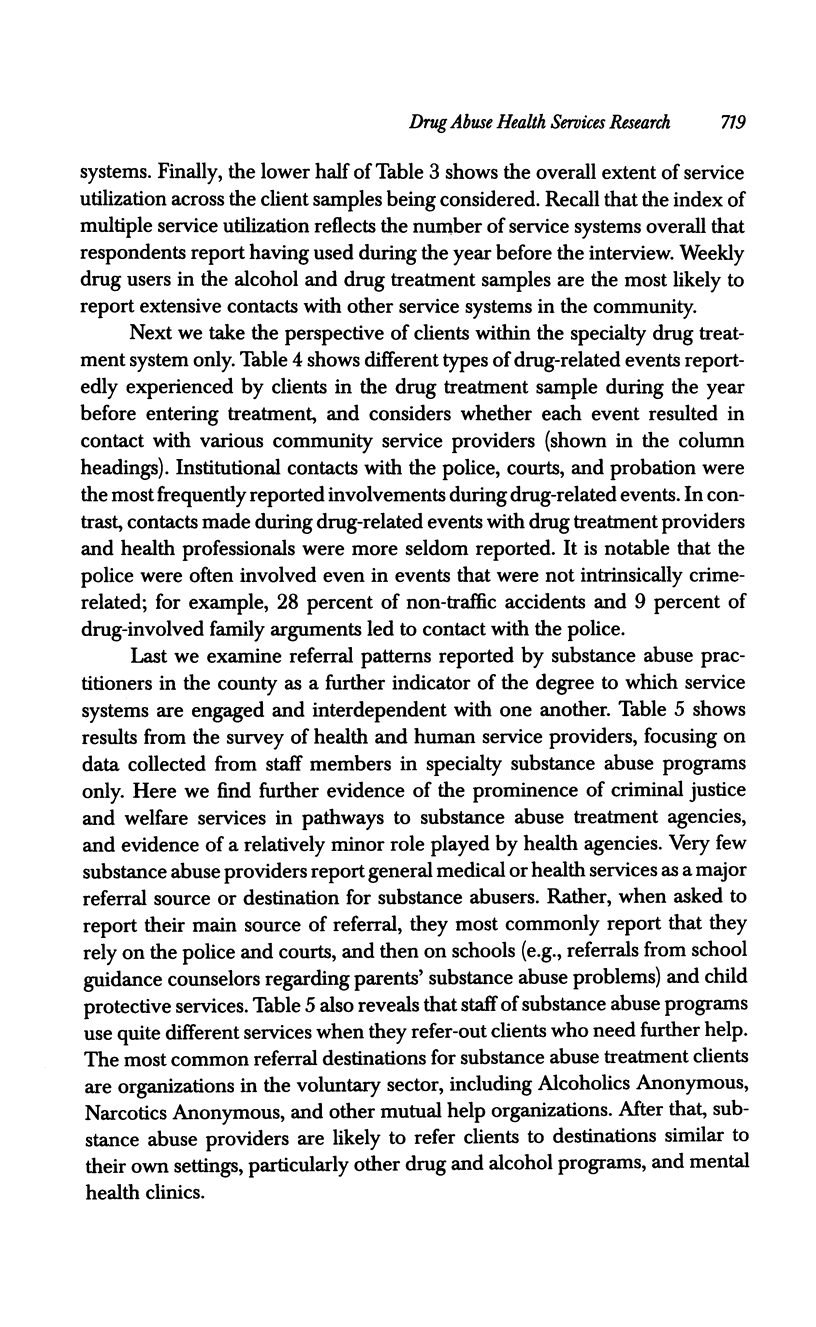
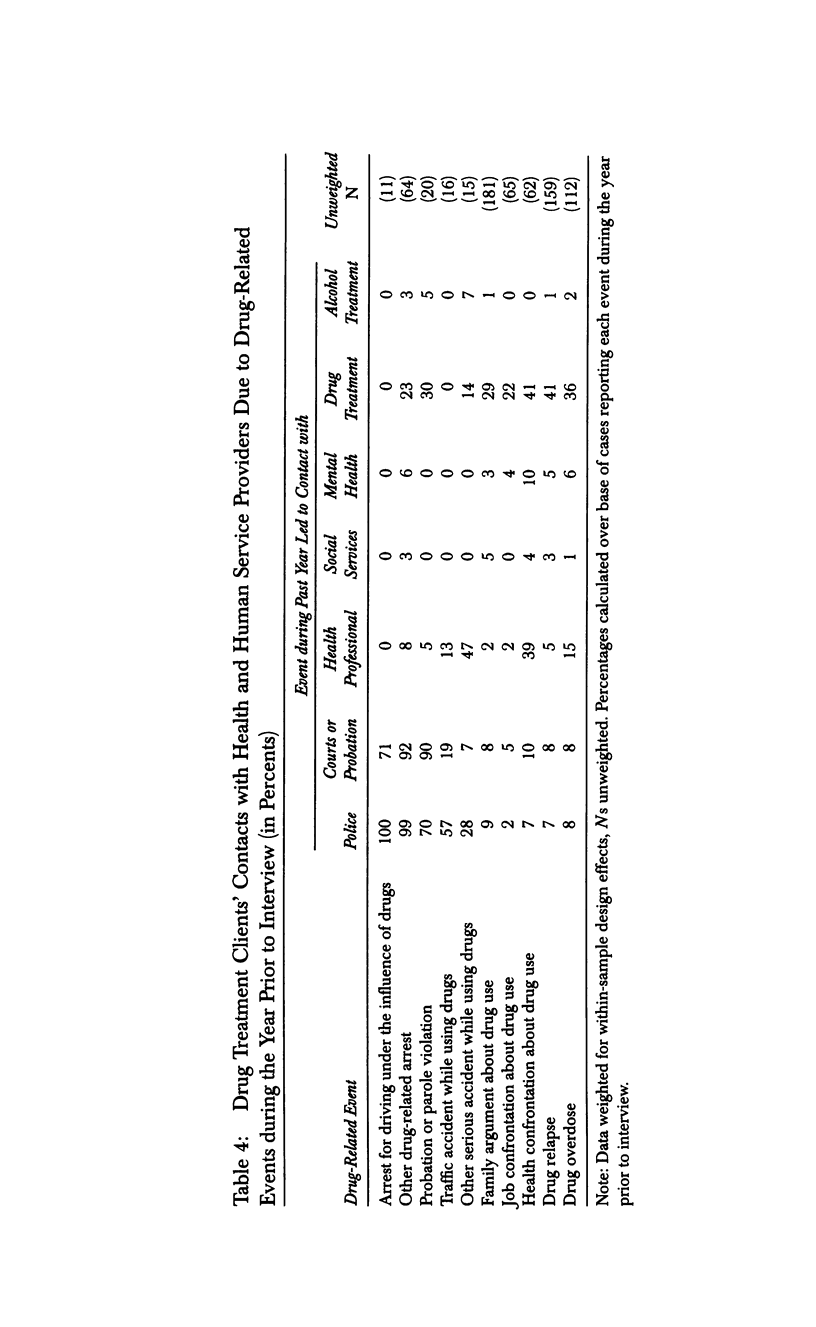
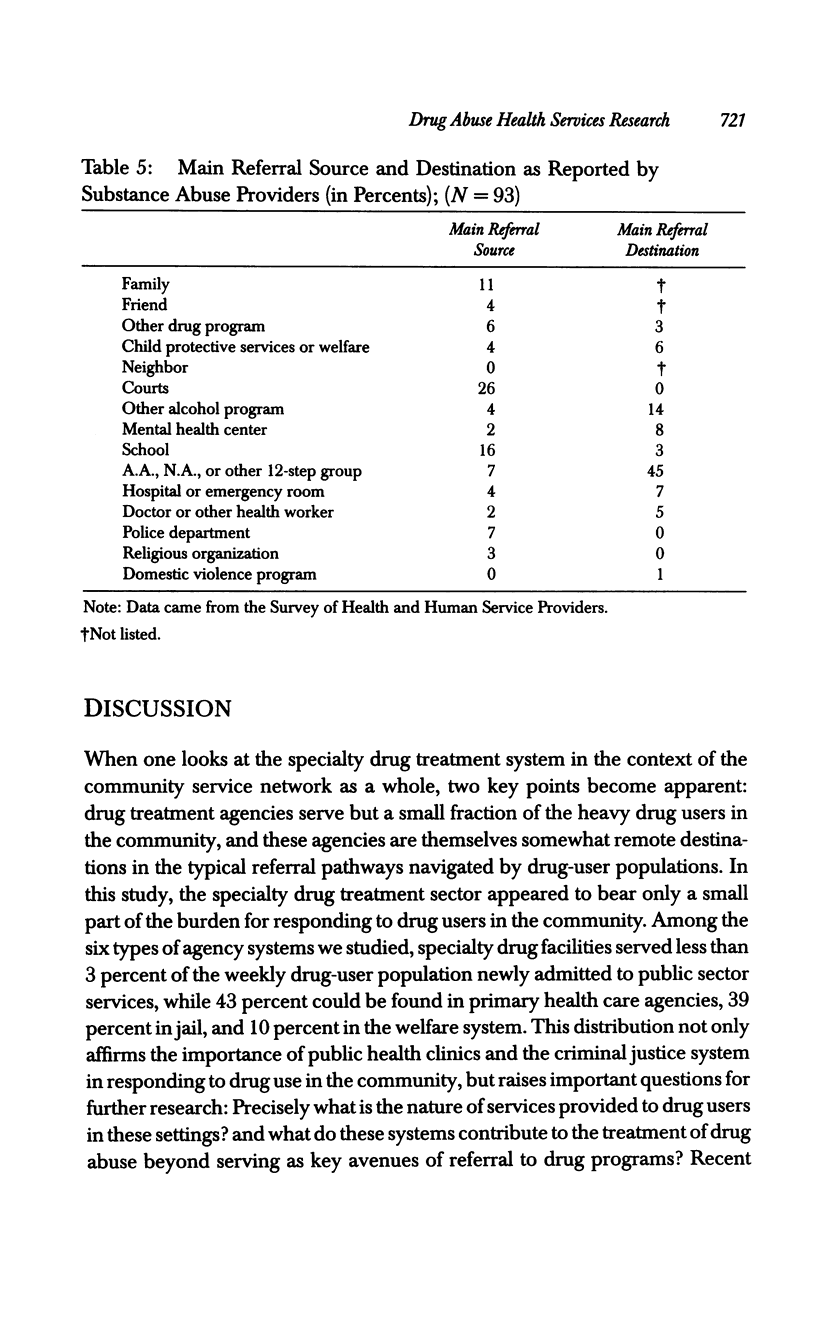
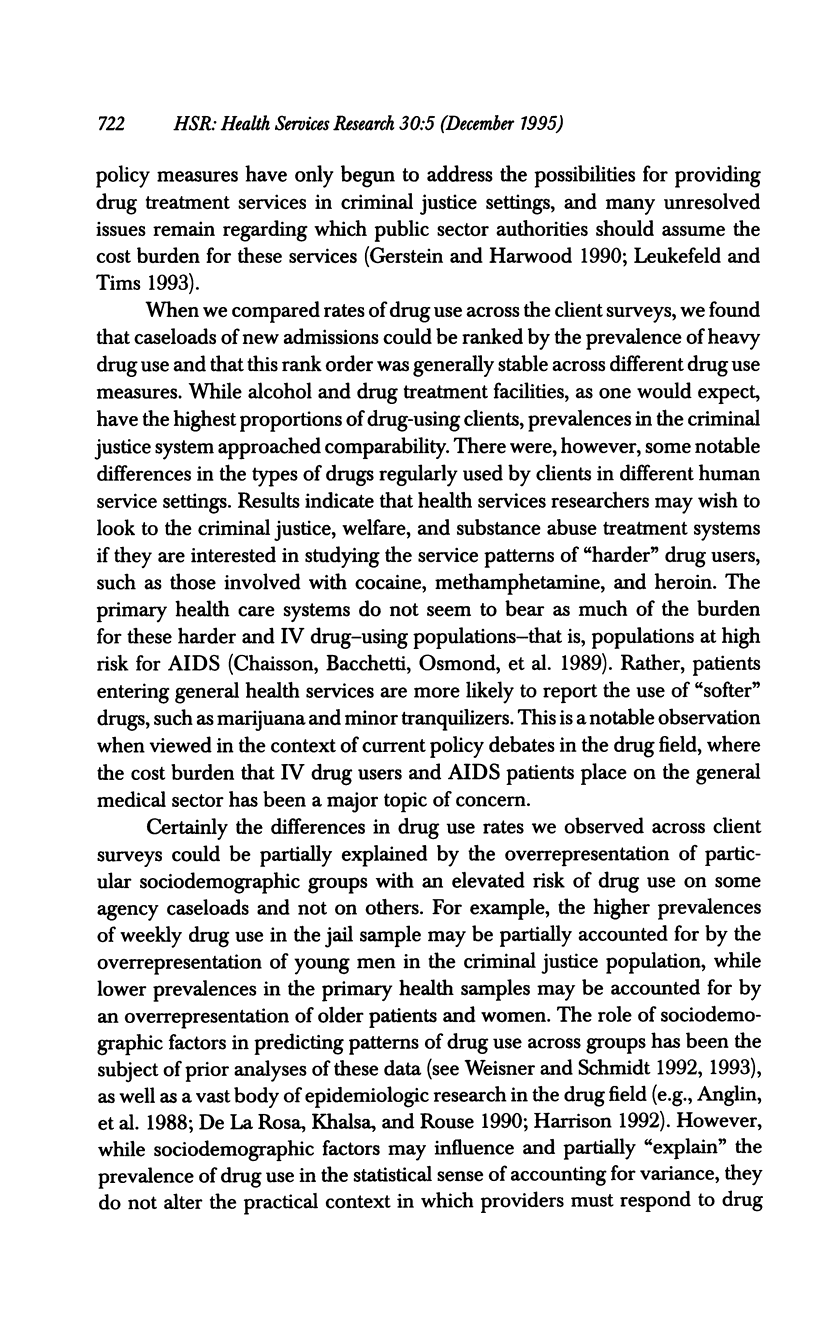
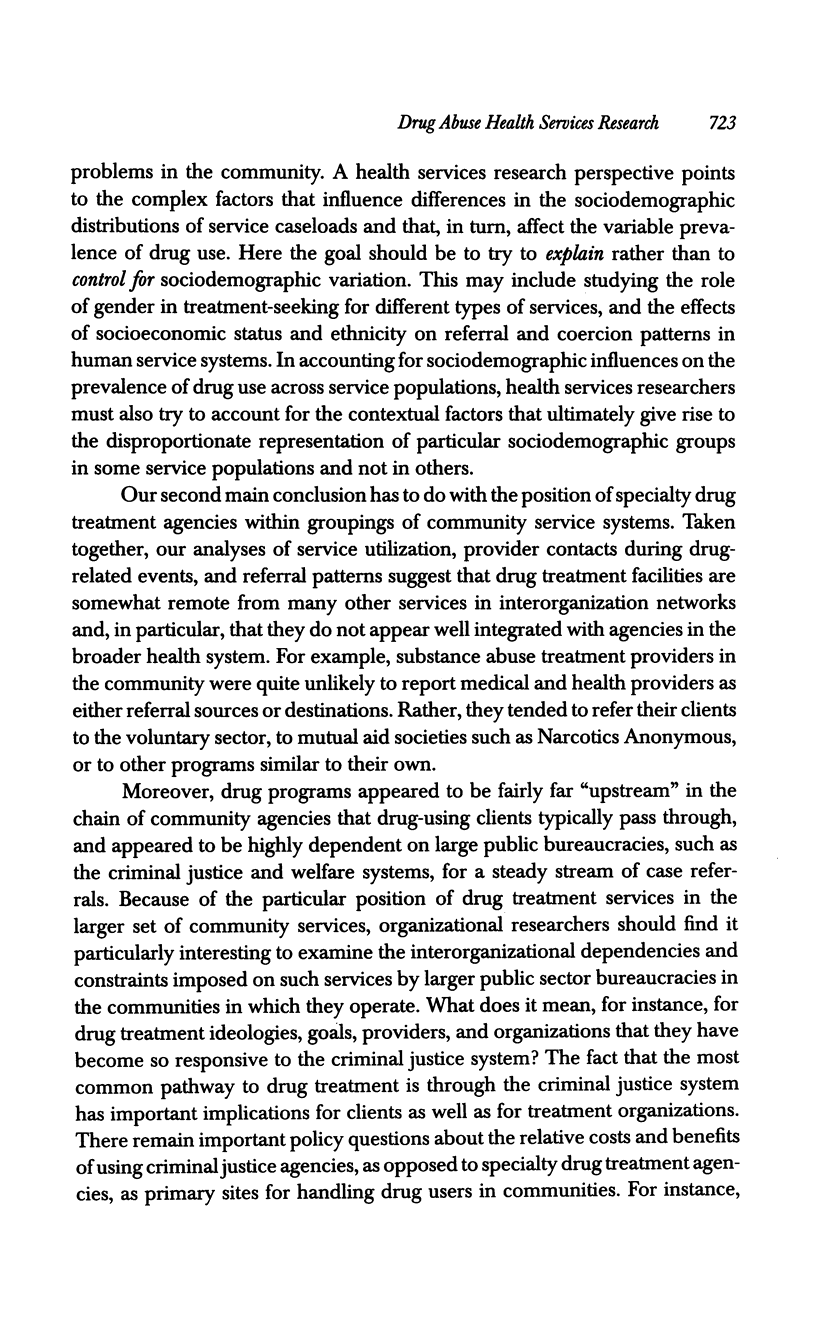
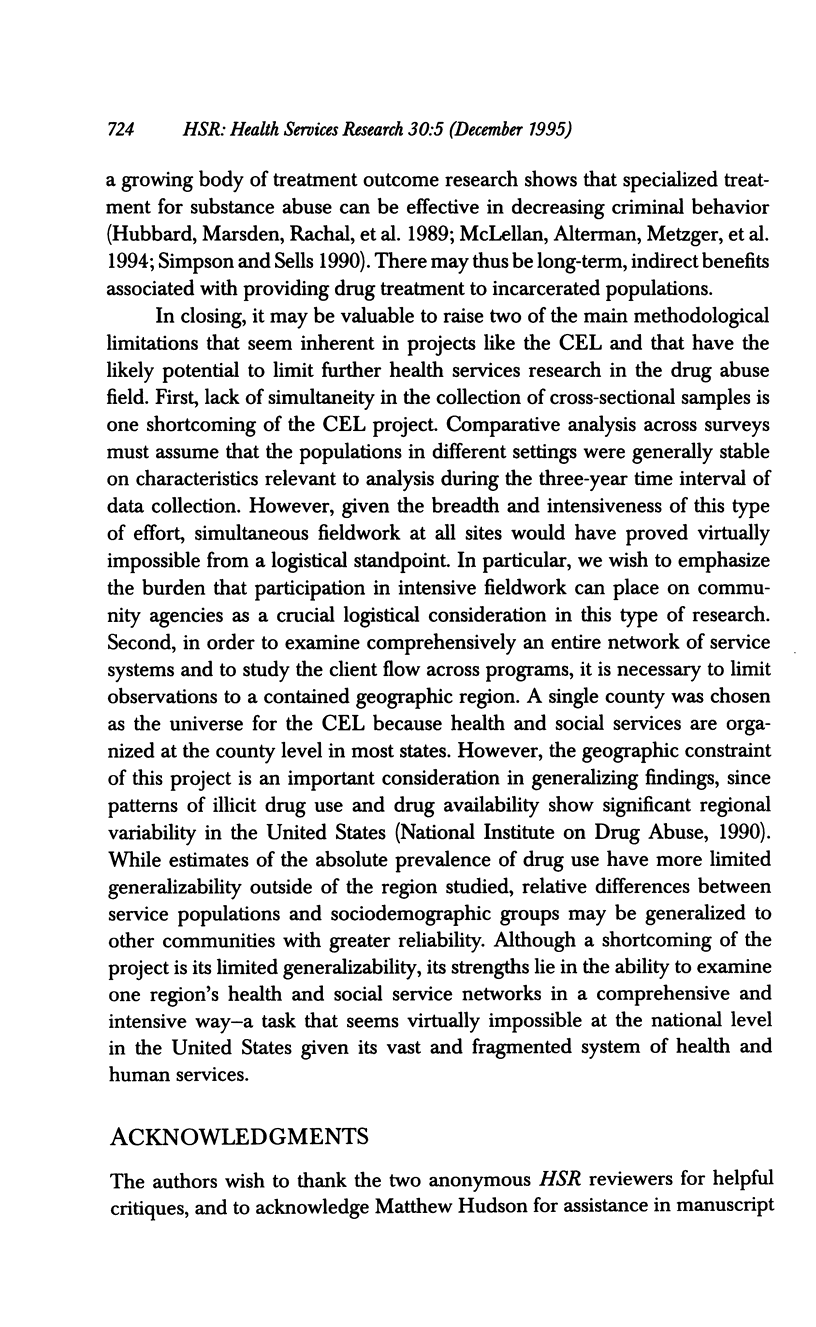
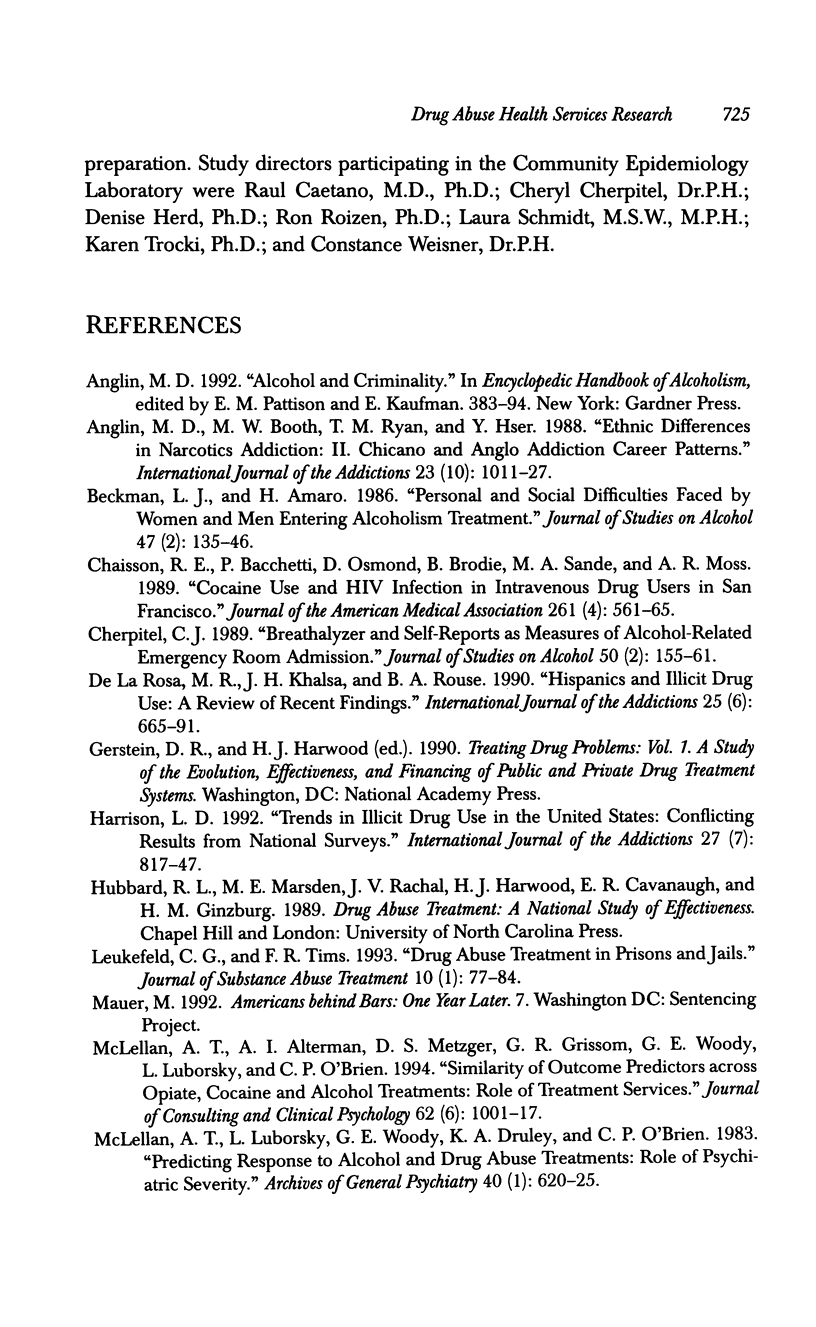
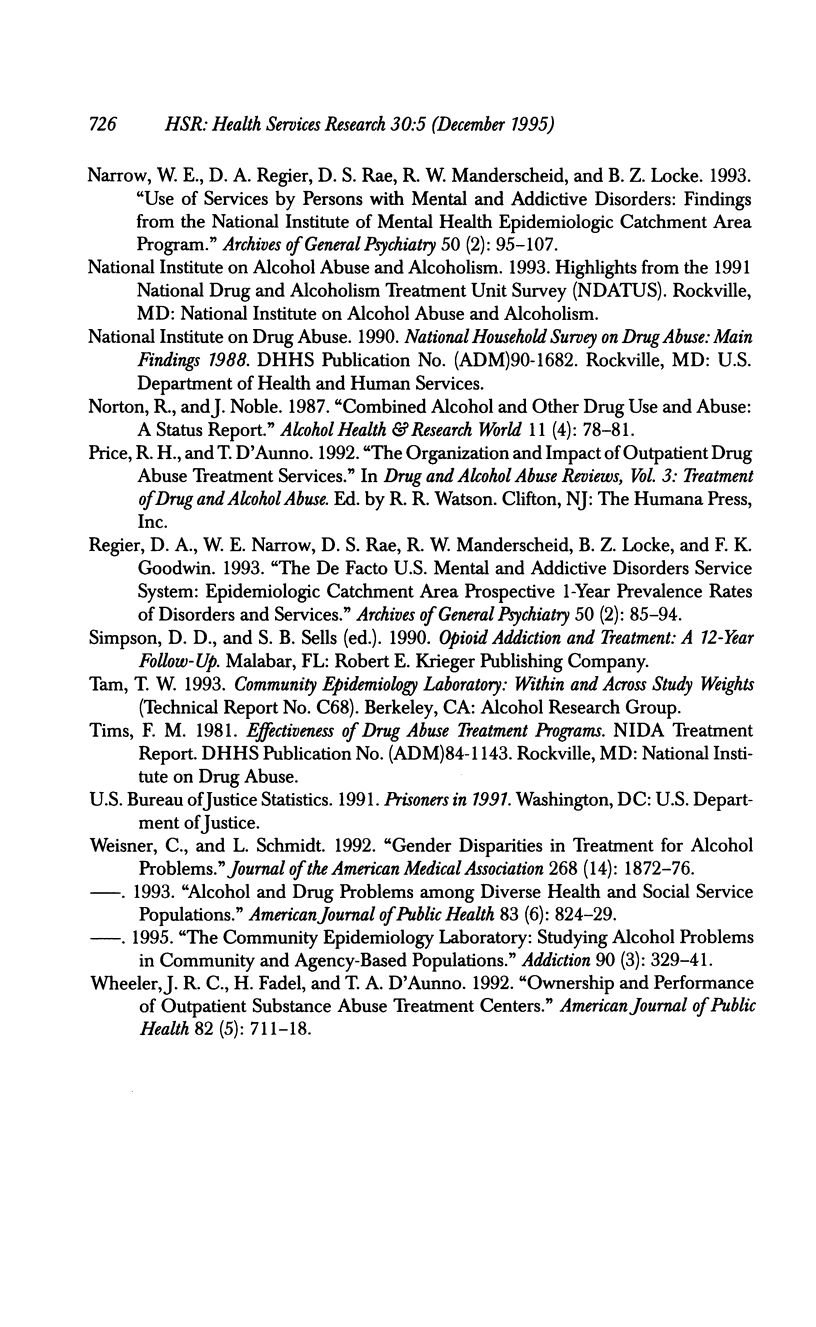
Images in this article
Selected References
These references are in PubMed. This may not be the complete list of references from this article.
- Anglin M. D., Booth M. W., Ryan T. M., Hser Y. I. Ethnic differences in narcotics addiction. II. Chicano and Anglo addiction career patterns. Int J Addict. 1988 Oct;23(10):1011–1027. doi: 10.3109/10826088809056182. [DOI] [PubMed] [Google Scholar]
- Beckman L. J., Amaro H. Personal and social difficulties faced by women and men entering alcoholism treatment. J Stud Alcohol. 1986 Mar;47(2):135–145. doi: 10.15288/jsa.1986.47.135. [DOI] [PubMed] [Google Scholar]
- Chaisson R. E., Bacchetti P., Osmond D., Brodie B., Sande M. A., Moss A. R. Cocaine use and HIV infection in intravenous drug users in San Francisco. JAMA. 1989 Jan 27;261(4):561–565. [PubMed] [Google Scholar]
- Cherpitel C. J. Breath analysis and self-reports as measures of alcohol-related emergency room admissions. J Stud Alcohol. 1989 Mar;50(2):155–161. doi: 10.15288/jsa.1989.50.155. [DOI] [PubMed] [Google Scholar]
- De La Rosa M. R., Khalsa J. H., Rouse B. A. Hispanics and illicit drug use: a review of recent findings. Int J Addict. 1990 Jun;25(6):665–691. doi: 10.3109/10826089009061327. [DOI] [PubMed] [Google Scholar]
- Harrison L. D. Trends in illicit drug use in the United States: conflicting results from national surveys. Int J Addict. 1992;27(7):817–847. doi: 10.3109/10826089209068769. [DOI] [PubMed] [Google Scholar]
- Leukefeld C. G., Tims F. R. Drug abuse treatment in prisons and jails. J Subst Abuse Treat. 1993 Jan-Feb;10(1):77–84. doi: 10.1016/0740-5472(93)90103-9. [DOI] [PubMed] [Google Scholar]
- McLellan A. T., Luborsky L., Woody G. E., O'Brien C. P., Druley K. A. Predicting response to alcohol and drug abuse treatments. Role of psychiatric severity. Arch Gen Psychiatry. 1983 Jun;40(6):620–625. doi: 10.1001/archpsyc.1983.04390010030004. [DOI] [PubMed] [Google Scholar]
- Narrow W. E., Regier D. A., Rae D. S., Manderscheid R. W., Locke B. Z. Use of services by persons with mental and addictive disorders. Findings from the National Institute of Mental Health Epidemiologic Catchment Area Program. Arch Gen Psychiatry. 1993 Feb;50(2):95–107. doi: 10.1001/archpsyc.1993.01820140017002. [DOI] [PubMed] [Google Scholar]
- Regier D. A., Narrow W. E., Rae D. S., Manderscheid R. W., Locke B. Z., Goodwin F. K. The de facto US mental and addictive disorders service system. Epidemiologic catchment area prospective 1-year prevalence rates of disorders and services. Arch Gen Psychiatry. 1993 Feb;50(2):85–94. doi: 10.1001/archpsyc.1993.01820140007001. [DOI] [PubMed] [Google Scholar]
- Weisner C., Schmidt L. Gender disparities in treatment for alcohol problems. JAMA. 1992 Oct 14;268(14):1872–1876. [PubMed] [Google Scholar]
- Wheeler J. R., Fadel H., D'Aunno T. A. Ownership and performance of outpatient substance abuse treatment centers. Am J Public Health. 1992 May;82(5):711–718. doi: 10.2105/ajph.82.5.711. [DOI] [PMC free article] [PubMed] [Google Scholar]



